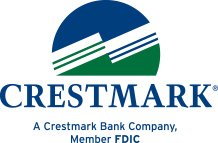According to a 2015 survey by Consumer Reports, the vast majority of Americans say they prefer to purchase American-made products. The good news is that while U.S. manufacturers have faced many obstacles to success, they continue to innovate, create efficiencies, and produce goods that are in demand.
Since Crestmark was founded in 1996, manufacturers have been a core client base, and have been important to the bank’s growth and success. So far this year, Crestmark has helped entrepreneurial U.S. manufacturers from all areas of the country, including: California, Colorado, Florida, Georgia, Louisiana, Michigan, New York, Ohio, Tennessee, and Texas. The diverse array of products they manufacture include:
- Aggregate
- Apparel
- Automotive components
- Beer
- Bicycles
- Brackets
- Building supplies
- Chains, ropes, rigging
- Cosmetics
- Electronics
- Footwear
- Furniture
- Handbags, belts, wallets and scarves
- Home goods
- Machinery and tooling for various industries
- Medical devices
- Orthopedic implants
- Packaging
- Pipes, fittings, valves and gaskets
- Propulsion systems
- Signage
- Solar energy systems
- Steel
- Storage cabinets
Though news articles often depict the decline of U.S. manufacturing, it continues to be an important part of the U.S. economy. ABA Banking Journal looks at the manufacturing sector in an article titled “How Banks Drive Growth in American Manufacturing.”
Crestmark founder and CEO Dave Tull was interviewed for the article. On helping manufacturers with cash flow, Tull told the ABA Banking Journal, “The turnover of the cash doesn’t often coincide with the need for cash. The cash is going to be there, so it’s just a timing issue.” One way that Crestmark helps manufacturers with this common challenge is by purchasing accounts receivable. This provides manufacturers with quick access to funds.
In the article, it is explained that Crestmark has a range of options to help manufacturers. For example, when a manufacturer needs funds to get to the next level, Crestmark can help. “We step in to finance growth,” Tull says.
Read the complete ABA Banking Journal article here.

